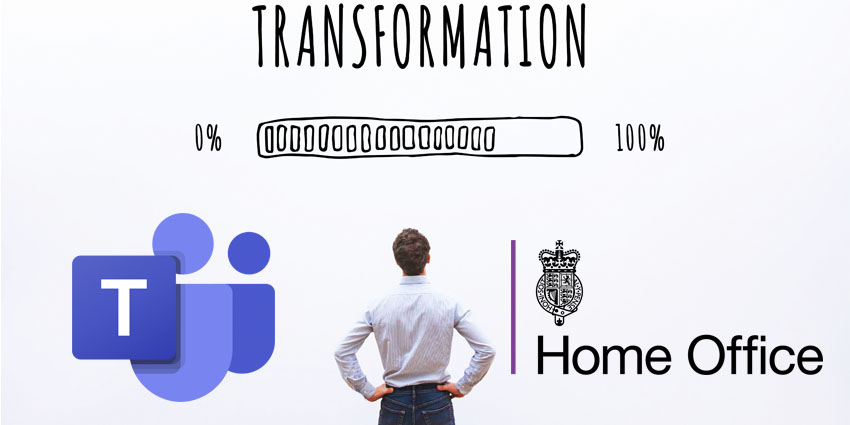Microsoft has migrated 63,000 users at the UK’s Home Office to Teams Phone in just eight days.
In a tremendously impressive digital transformation project, the Redmond-based vendor collaborated with Colt and Netcompany to introduce Microsoft Teams Phone to the Home Office department of the UK government, intending to modernise its communications infrastructure.
The Home Office affirms that the transformative initiative, combined with the full adoption of Microsoft 365 E5, has boosted productivity, enhanced collaboration, strengthened security, and empowered the Home Office to deliver more efficient public services.
- Enterprise Connect 2025: Breaking Down All the Major Microsoft Teams News
- Teams Gets Update to End Collaboration Pains Felt with Presentations
The Challenge
Seamless communication is vital to the Home Office’s national security and public safety operations. Managing nearly one billion call and conference minutes annually—60 percent with video—the department relies on a robust network for real-time decision-making and collaboration.
“Our communication infrastructure is the backbone of our operations,” said Robbie Warwick, Head of the Voice and Video Products at Home Office. “It ensures we can respond swiftly to challenges and collaborate effectively across all areas of responsibility.”
Our service users can be in life-threatening situations, so it’s vital we get it right. When technology operates seamlessly—so much so that no one notices—it means it’s working.”
In 2018, the Home Office partnered with Microsoft to upgrade its communications by adopting Skype for Business, signalling a key step in strengthening its operational resilience. For four years, the Skype for Business service—delivered with Colt and its third-party supplier—supported the department’s telephony needs, streamlining comms and reinforcing the Home Office’s partnership with Microsoft.
Building on this success, the Home Office sought further innovation within Microsoft’s ecosystem. This led to the next strategic step: a complete transition to Microsoft Teams Phone.
Since 2020, Microsoft Teams has been used primarily for collaboration in Islands mode, while Skype for Business remained the core telephony solution. The Home Office prioritised migration to consolidate licensing, streamline infrastructure, and eliminate redundancy. This shift also supported the upgrade to Microsoft 365 E5, unlocking enhanced security, compliance, and operational efficiencies.
“With Microsoft Teams Phone, we saw immense potential to transform the way we worked, creating a more unified and adaptable environment for collaboration,” said Robbie Warwick.
The Transformation Project in Detail
As outlined, the Home Office took a bold approach to its Microsoft Teams Phone transition, prioritising speed and precision over a gradual rollout. Instead of a phased migration, the team executed a meticulously planned switch in just eight working days, minimising disruption while maintaining operational security and ensuring uninterrupted essential services.
“By tackling everything at once and focusing our resources on a quick resolution, we aimed to deliver the highest quality service to users,” Warwick explained. “We weren’t going to run systems side by side, as delaying would only prolong the complexity associated with the change for users. Instead, we prioritised automation and speed, ensuring the change-effort stayed within the technology teams.”
The migration began with a pilot involving 500 users to identify potential issues and refine the strategy. After its success, the process accelerated rapidly. The first wave transitioned 500 users, followed by a two-day pause for assessment. Then, 10,000 users were migrated in a single night, with a break day before ramping up to 20,000 users per night for three consecutive nights. The entire transition was completed within a week.
Automation was key to the Home Office’s seamless Microsoft Teams Phone migration. The Migration Communication Bot, embedded in the migration script, sent real-time Teams Chat updates, guiding users through the process. A second script monitored provisioning and triggered a final message, informing users of the switch from Skype for Business and providing support resources.
What Have Been the Outcomes So Far?
The success of the migration was evident in the positive user feedback, with a 97 percent satisfaction rate and a Net Promoter Score (NPS) of 9.8. This enthusiasm continued as employees integrated Microsoft Teams Phone into their daily work.
The Home Office affirms that the adoption of Teams Phone has transformed how employees manage their workloads, streamlining communication with voice, video, and messaging. Teams Phone, along with Teams Premium and tools like Copilot, has been credited with driving smarter working, enhancing collaboration and responsiveness.
Features such as video calls, mobile access, and integrated tools have improved real-time teamwork, particularly in the field, where employees can now provide live visual updates and receive instant feedback via Teams on their smartphones.
The move to Teams Phone has also reduced operational costs by consolidating platforms and extending desk phone service life through the Microsoft SIP Gateway. These savings have allowed the Home Office to reinvest in other key areas, delivering greater value to the public.
“The tools within Microsoft Teams Phone enabled our users to work smarter and ensure that everyone has what they need to succeed,” added Warwick.
Have thoughts to add? Join the conversation on LinkedIn or Reddit—we’d love to hear your perspective.
Join our UC Community
Be part of a community that shapes the future of UC. Join thousands of like-minded professionals who share your passion for exceptional Unified Communications.







